Simulated dynamics of southern cattle fever ticks (Rhipicephalus (Boophilus) microplus) in south Texas, USA: investigating potential wildlife-mediated impacts on eradication efforts
- PMID: 33933151
- PMCID: PMC8088722
- DOI: 10.1186/s13071-021-04724-3
Simulated dynamics of southern cattle fever ticks (Rhipicephalus (Boophilus) microplus) in south Texas, USA: investigating potential wildlife-mediated impacts on eradication efforts
Abstract
Background: Cattle fever ticks (CFT), Rhipicephalus (Boophilus) annulatus and R. (B.) microplus, are vectors of microbes causing bovine babesiosis and pose a threat to the economic viability of the US livestock industry. Efforts by the Cattle Fever Tick Eradication Program (CFTEP) along the US-Mexico border in south Texas are complicated by the involvement of alternate hosts, including white-tailed deer (Odocoileus virginianus) and nilgai (Boselaphus tragocamelus).
Methods: In the present study, we use a spatially explicit, individual-based model to explore the potential effects of host species composition and host habitat use patterns on southern cattle fever ticks (SCFT, R. (B.) microplus) infestation dynamics and efficacy of eradication schemes.
Results: In simulations without eradication efforts, mean off-host larval densities were much higher when cattle were present than when only white-tailed deer and nilgai were present. Densities in mesquite and meadows were slightly higher, and densities in mixed brush were much lower, than landscape-level densities in each of these scenarios. In eradication simulations, reductions in mean off-host larval densities at the landscape level were much smaller when acaricide was applied to cattle only, or to cattle and white-tailed deer, than when applied to cattle and nilgai. Relative density reductions in mesquite, mixed brush, and meadows depended on host habitat use preferences. Shifting nilgai habitat use preferences increasingly toward mixed brush and away from mesquite did not change mean off-host larval tick densities noticeably at the landscape level. However, mean densities were increased markedly in mesquite and decreased markedly in mixed brush, while no noticeable change in density was observed in meadows.
Conclusions: Our results suggest that continued integration of field data into spatially explicit, individual-based models will facilitate the development of novel eradication strategies and will allow near-real-time infestation forecasts as an aid in anticipating and preventing wildlife-mediated impacts on SCFT eradication efforts.
Keywords: Agent-based model; Cattle Fever Tick Eradication Program; Host community; Individual-based model; Integrated tick management; Nilgai; White-tailed deer.
Conflict of interest statement
The authors declare that they have no competing interests.
Figures
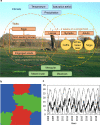
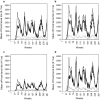
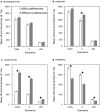
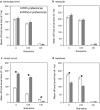
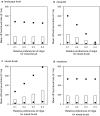
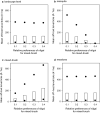
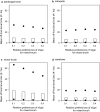
References
-
- Pérez de León A, Vannier E, Alamazán C, Krause PJ. Tick-borne protozoa. In: Sonenshine DE, Roe RM, editors. Biology of ticks. New York: Oxford University Press; 2014. pp. 147–179.
-
- Lohmeyer K, Pound J, May M, Kammlah D, Davey R. Distribution of Rhipicephalus (Boophilus) microplus and Rhipicephalus (Boophilus) annulatus (Acari: Ixodidae) infestations detected in the United States along the Texas/Mexico border. J Med Entomol. 2011;48(4):770–774. doi: 10.1603/ME10209. - DOI - PubMed
-
- Pérez de León AA, Teel PD, Li A, Ponnusamy L, Roe RM. Advancing integrated tick management to mitigate burden of tick-borne diseases. Outlooks Pest Manage. 2014;25(6):382–389. doi: 10.1564/v25_dec_10. - DOI
MeSH terms
Grants and funding
LinkOut - more resources
Full Text Sources
Other Literature Sources

